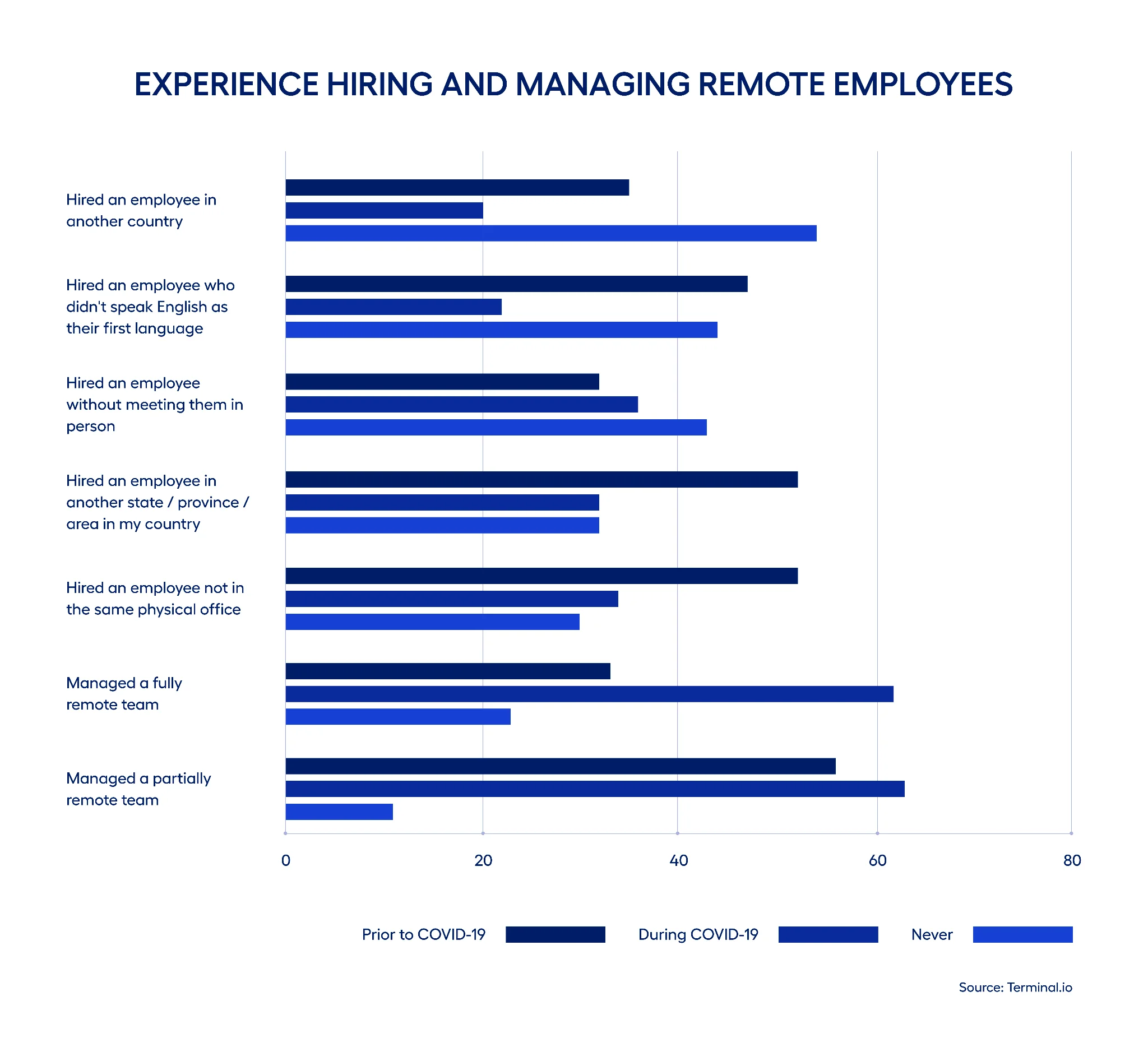People working in all industries have experienced unprecedented changes in the past two years. Leaders have had to adjust to vastly different working conditions, with millions working from home.
During the Running Remote 2022 Conference, the topics around distributed workforce and the future of work were on top of each stage’s agenda. Multiplier’s CEO, Sagar Khatri, highlighted during his fireside interview that, “I firmly believe that we are at the start of this long trend where companies big or small will adopt and enable a distributed workforce for their teams.”
A Forbes article, The Sustainability of Remote Work, highlighted how companies still use makeshift methods to run remote operations.
Small and big businesses are still trying to figure out the right mix of remote and hybrid in-office work. But the big picture is now clear indicating the essential role of remote and distributed teams in the future of work. Hence, this raises the question: what is the best way to lead teams that work in different places?
The Need For Long-Distance Leaders
Many companies have to retrain their employees on new technology, shift processes, and move toward a digital-first workplace without notice. And leaders aren’t any more prepared than the average employee.
In fact, according to a Remote Leadership Report, 77% of leaders have never handled a fully remote team, and 89% have never driven a partially remote team.
It’s hard to lead a team in person, and it’s even harder to lead a team that’s far away. The shift to remote work happened overnight, thus it’s no surprise that many leaders have been caught off guard.
Multiplier’s Global Director of Sales, Drew Calin spoke about the importance of getting a sense of the how the employees feel in order to get the best out of a remote or distributed team.
“The input isn’t nearly as important as the output,” he said. “We (Multiplier) recruit all over the world. We have a very clear sense of what we’re trying to achieve as a business. And it’s easy to measure output by different roles. But how do you actually get a sense of the energy and the emotion of the company and how people feel? That’s a trickier subject for me. That’s like qualitative stuff, which is the harder stuff to measure. The quantitative part is relatively easy.”
Here are some other common problems leaders face with remote work:
Isolation
Remote leaders have trouble keeping in touch with their teams regularly and understanding how their teammates feel and what they need.
Transactional environment
Work has become more transactional. It’s easier to avoid talking to someone you don’t need, leading to the formation of silos, power struggles and wasted time.
Lack of face-to-face involvement
In the virtual workplace, many managers find struggle to keep track of day-to-day progress, understand team members’ non-visual cues, and talk to people who are far away.
How to Make Borderless Work Mainstream
Borders may have fallen, but leaders shouldn’t! So what does this future of work have to do with being a leader?
We can see that managing a remote department involves more than just working from home and using virtual work tools. It means that leaders must completely reform their outlook towards work since people who work remotely aren’t limited to 9-to-5 schedules.
Instead of seeing remote work as a burden and a temporary situation, leaders could look at it as a chance to learn a new set of management skills. It’s time to stop being reactive and put that energy into making plans that work for the long term.
Like Zoë Harte of Upwork said at Running Remote, it is about enabling conversations that are helpful and meaningful.
“Distributed (working) doesn’t mean we won’t get together. It means we do it when it’s helpful, when it’s important and when it’s impactful to our team. So we want you to collaborate,” said Harte.
At Multiplier, having a distributed workforce is part of what makes us who we are. We strive to strengthen a high-performing and cross-border team that wins. In application, here’s what it looks like:
Clone the “water cooler” chat
Perhaps the biggest drawback to remote work is finding a genuine connection through casual chats. This may not seem important initially, but these informal conversations can give essential information about how happy the employees are, their problems, and how well they understand each other. Setting up virtual meetings, being available for the team, and being honest in the communication help replicate some of the social capital that was prevalent previously.
Enable creative collaboration and communication
If locations or other constraints prevent authentic connections in your team, try developing team-building alternatives. Employees who connect with their team and leaders who inspire effective action are key to effective collaboration. According to Harte, fostering an ongoing relationship within a remote team is tough, but it’s a real net positive for what it means to show up and be part of a team. This can be an opportunity to show your authentic self and build deeper connections around you.
Promote feedback
Encouraging feedback is essential in any leadership role, even more so in a remote setting. Offering various routes for contact allows employees to feel valued. And listening to their suggestions and implementing them where possible can go a long way in securing trust and respect.
Remote employees are glad to work anywhere they want, and companies are happy to have them on board. The manager, who is in the middle, is essential for bridging the gap between the two. Once companies figure out how to deal with these problems, remote work will be a natural part of just work.








